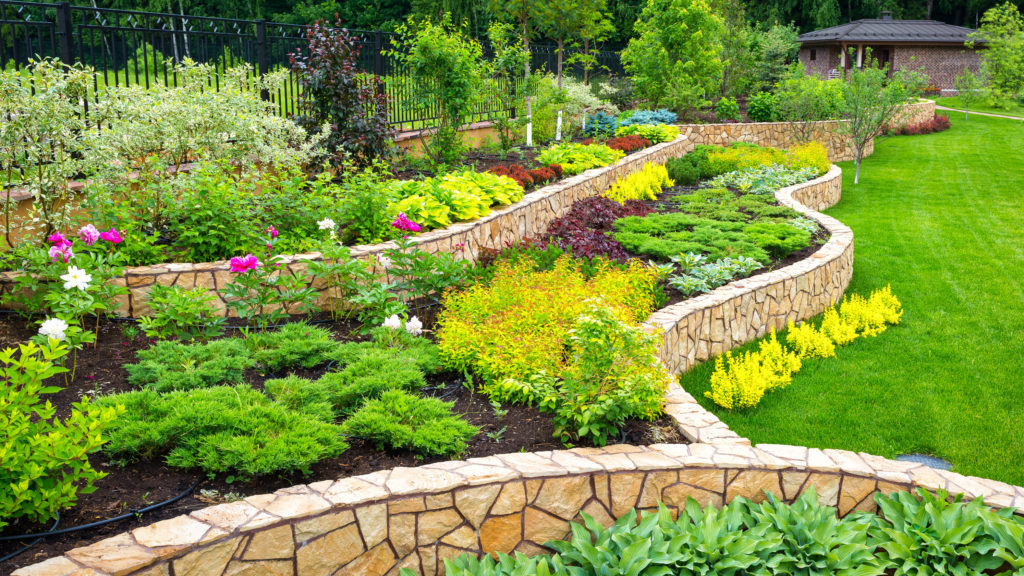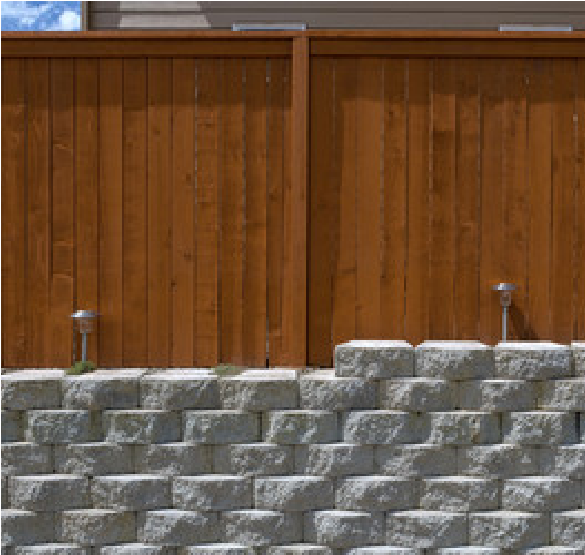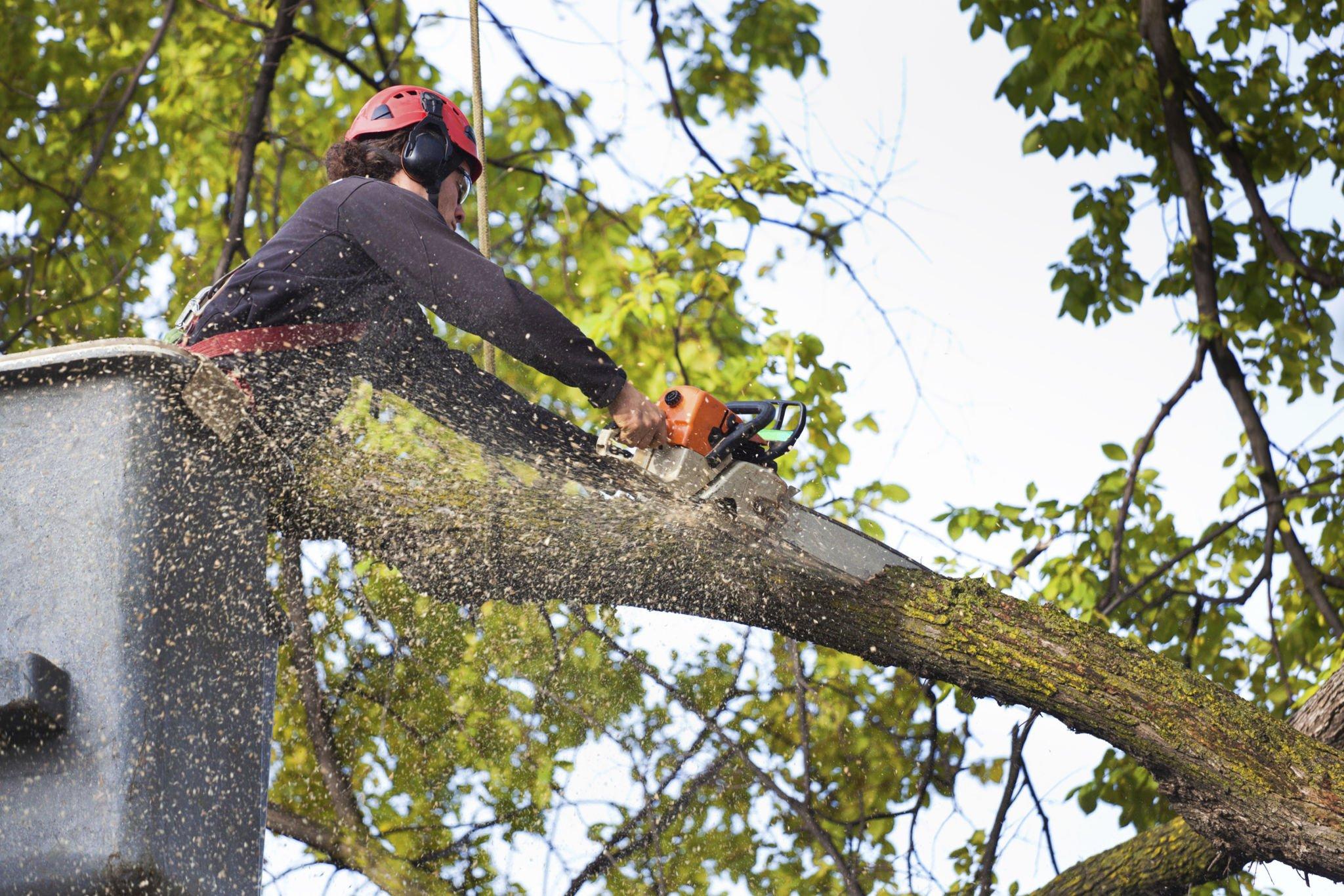If you are looking for a way to improve the look and functionality of your property, you may want to consider installing a retaining wall. Retaining walls come in many different shapes and sizes, and can be made from a variety of materials. There are three main types of retaining walls: gravity walls, reinforced earth walls, and composite walls. In this blog post, we will discuss the pros and cons of each type of wall, so that you can make an informed decision about which one is right for you!
Benefits of Retaining Walls
There are many benefits to installing a retaining wall, regardless of which type you choose. Retaining walls can:
Prevent soil erosion
Soil erosion is a major problem in many parts of the world. When rain falls on bare soil, it can wash away topsoil, leaving behind a layer of rock and gravel. This can make it difficult for plants to grow and can lead to serious flooding problems. Retaining walls can help to prevent soil erosion by holding back the soil and allowing it to absorb the rainwater.
Improve drainage
Poor drainage is another common problem in many parts of the world. When rain falls on poorly-drained soil, it can pool on the surface and lead to flooding. Retaining walls can help to improve drainage by channeling water away from your property and into a drainage system.
Enhance the appearance of your property
Retaining walls can be used to create beautiful, terraced gardens. They can also be used to build steps or to add height and interest to your property. The beauty of your property will not only improve your curb appeal but will also increase its value.
Increase the value of your property
If you are thinking about selling your property, a retaining wall can increase its value by enhancing its appearance and increasing its functionality. With the many features that retaining walls can offer, they are definitely an investment worth considering!

The Different Types of Retaining Walls and When to Use Them
While there are quite a number of retaining walls, we will focus on the 3 main types, namely:
- Gravity Walls
- Reinforced Earth Walls
- Composite Walls
Gravity Walls
Gravity walls are the most common type of retaining wall. They are made from heavy-weight materials like concrete, stone, or brick. Gravity walls rely on their weight to hold back the soil. The downside of gravity walls is that they can be expensive to build, and if not built properly, they can collapse.
In most cases, gravity walls are only recommended for properties that are located in areas with low rainfall and light winds. If you live in an area with high rainfall or strong winds, it is best to consult a professional before deciding on a gravity wall.
The main advantage of this type of retaining wall is the fact that they are the most inexpensive to construct. They are also the easiest to design and build, making them a good choice for do-it-yourselfers.
Reinforced Earth Walls
Reinforced earth walls are made from a combination of soil and reinforcement materials like metal or plastic mesh. The reinforcement material helps to hold the soil in place and prevents it from collapsing. Reinforced earth walls are often used in commercial and industrial applications, as they are very strong and can be built to any height.
The main disadvantage of reinforced earth walls is that they can be expensive to construct. In addition, the reinforcement materials can rust or degrade over time, which can weaken the wall.
Composite
Composite walls are a combination of gravity and reinforced earth walls. They are made from a combination of soil, concrete, stone, or brick. The reinforcement material helps to hold the soil in place and prevents it from collapsing.
The main advantage of composite walls is that they are very strong and can be built to any height. In addition, the reinforcement materials will not rust or degrade over time.
The main disadvantage of composite walls is that they can be expensive to construct.

How to Choose The Right Retaining Wall For Your Property
When choosing a retaining wall for your property, there are a few things that you need to take into consideration, such as:
- The purpose of the retaining wall: The first thing that you need to do is to determine the purpose of the retaining wall. Are you looking to improve drainage, enhance the appearance of your property, or increase its value? Once you have determined the purpose, you can then decide on the type of retaining wall that will best suit your needs.
- The location of the retaining wall: The location of the retaining wall is also an important factor to consider. You need to make sure that the wall is located in an area where it will not be obstructed by trees, shrubs, or other objects. In addition, you also need to make sure that the wall is located in an area where it will not be damaged by the elements.
- The size of the retaining wall: The size of the retaining wall is also an important factor to consider. The wall needs to be big enough to hold back the soil, but not so big that it will take up too much space on your property.
- The type of soil: The type of soil is also an important factor to consider. If you live in an area with high rainfall or strong winds, it is best to consult a professional before deciding on a retaining wall.
- The type of material: The type of material that you use for the retaining wall is also an important factor to consider. There are a variety of materials that can be used for the wall, such as concrete, stone, brick, or metal. Each type of material has its own advantages and disadvantages.
- The cost: The cost of the retaining wall is also an important factor to consider. You need to make sure that you are getting the best value for your money.
Once you have considered all of these factors, you can then decide on the type of retaining wall that will best suit your needs. We would be happy to help you with the whole process of getting the right retaining wall.



